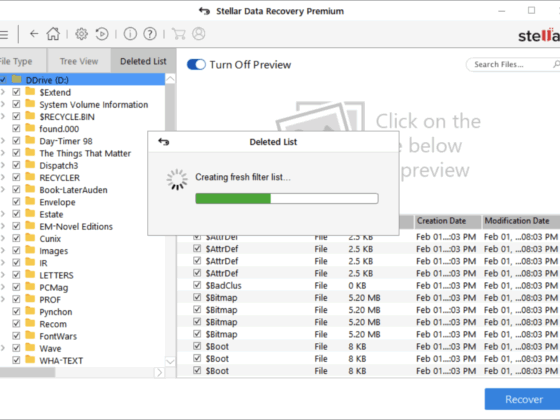
Threat hunting in cyber security will bear a slightly different meaning to every organization and professional. Different companies will be using different approaches to identify potentially malicious activity, and various experts will use different tactics to comb through systems.
Still, no matter how people approach it, a few things are certain about threat hunting. It’s a continuous effort that will often also prove to be time-consuming.
Still, organizations should look at threat hunting as a part of cyber security as companies should do the best they can to fend themselves from cyber attacks.
This article will aim at shedding more light on the importance of threat hunting in cyber security.
What is threat hunting generally defined as?
Threat hunting can be defined as the process when an experienced cyber security professional proactively uses machine-based and/or manual tactics to analyze and identify potential threats or incidents that the implemented and automated security detection protocols did not recognize.
In order to be successful in the process, analysts must know how to use their tool arsenal to locate the most imminent threats. Threat hunting also requires experience and a strong knowledge of the mechanics behind different malware and network protocols to navigate through the large data pool of a given system.
What is the role of a threat hunter?
As mentioned above, threat hunters are the cyber security experts who are tasked to identify and mitigate potential advanced threats before they cause troubles to a company’s or organization’s IT system.
These are the potential dangers that usually account for around 10% of threats, mostly those that solutions are unable to catch. This might not seem that significant, but even one advanced threat is enough to cause a huge data breach that can ruin an organization’s system (and credibility in the process).
And this is why threat hunters are a vital part of any security team.
As defined already, threat hunters are tasked with monitoring the systems continuously for potential attacks. Apart from this, they also scan for vulnerabilities within a given system to improve overall security and mitigate them before a risk actually affects the organization.
As such, threat hunters will usually perform the following:
• To actively search threats and risks within the system before the attacks happen
• To gather info regarding threat behavior, intent, goals, methods, and more.
• To organize and examine the gathered data to help determine the possibility of advanced threats along with evaluating the preparedness and the effectiveness of an organization’s security environment.
• To make possible predictions of future threats and to take care of currently vulnerable spots.
How do you start threat hunting?
Most companies who are looking to implement threat hunting in their security protocols will be looking for a seasoned expert who already has experience as a cyber security analyst and understands the nature of the job.
By design, cyber threats are continuously evolving, and hackers will apply different tactics and strategies to infiltrate systems. As such, a threat hunter should have a thorough understanding nature and the intent of past threats and should also be well-versed in handling the latest trends in cyber security.
Apart from that, threat hunters should also have a strong foundation in areas like computer sciences, programming, and/or cyber security in general.
Generally speaking, most threat hunters will have previously worked in the roles of security analysts. If an organization is interested in hiring a reliable professional, checking out certain certifications (for example, CompTIA Cybersecurity Analyst (CySA+) will serve as a good start to assess the knowledge and skill set of a candidate.
What tool can be used for threat hunting?
When talking about a threat hunter toolset, we must also talk about the different hunting methodologies these experts use to handle potential threats.
Generally speaking, experts use four different hunting models, and within these approaches, they will deploy different tools.
The intelligence-based approach
This is an active approach which aims to react to intelligence source inputs. These can be IP addresses, hash values, indicators of compromise, domain names, and more.
The active hunting method can be integrated with SIEM systems and other threat intelligence software that use the data to hunt for potential threats.
The hypothesis-based approach
This model revolves around testing three different hypotheses types:
Analytics-driven: this approach uses machine-learning along with UEBA (entity and user behavior analytics) to develop aggregated threat scores to determine and formulate hypotheses.
Situational-awareness driven: This involves crown jewel analysis and enterprise risk assessments.
Intelligence-driven: This incorporates vulnerability scans, malware analysis, and examining intelligence feeds and reports.
Investigation using IoA (Indicators of Attack)
This is the most proactive method that uses indicators of attack. The first move in this process is to identify the APT (or advanced persistent threat) and malware attacks by using the already available information.
The resulting actions will usually be the following:
• Using the indications of attack to identify potential threat actors
• Domain and environment assessment, along with attack behavior analysis to create a hypothesis that aligns with threat frameworks.
•After behavior identification, threat hunters try to locate different patterns through continuous monitoring.
The hybrid hunting approach
This method aims to combine all three approaches mentioned above. The advantage of this approach is that it allows experts to customize the hunting process. This method usually incorporates a variety of techniques of industry-based hunting, situational awareness, and more.
Conclusion
As you can clearly see, cyber hunting isn’t a fly-by-night process but an ongoing activity that requires knowledge and patience.
Hunters should have a deep understanding of the way hackers think, their intentions, the methods they use, and where they can hit next. Apart from that, they should also know how the cyber security protocols work in a given organization, as well as deeply understand how the organization’s own system works.
This all makes threat hunting an intricate and complex duty that requires dedication and knowledge.







